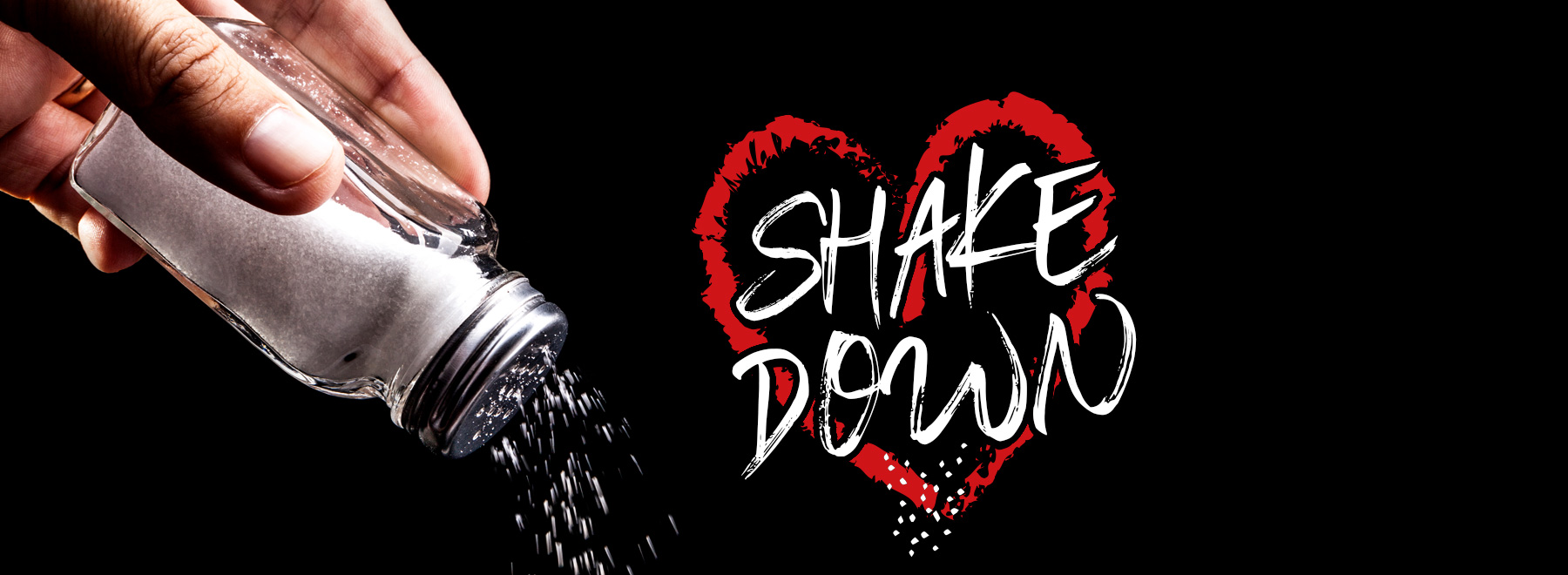Loosening salt’s grip on your taste buds can be good for your heart
For many of us, our health would almost certainly improve if we ate fewer rocks.
To stretch a point, we do eat them. Most Americans consume too much of a certain type of rock, or mineral; it’s called sodium.
Most people know it as salt, which contains chloride and sodium; the unguarded consumption of sodium has been linked to the No. 1 cause of death and disability in the U.S.: heart disease.
The right amount of sodium helps our nerves and muscles do their jobs, ensures a proper balance of water and minerals in our bodies and makes grits taste better than they have a right to; but most of us take in much more than we need – and we may not always know when we’re doing that, as two experts at the University of Mississippi Medical Center can tell you.

“Much of the salt we eat is not from the salt shaker; it’s already in the packaged and processed foods we consume. The levels are especially high in such things as soups and pizzas,” said cardiologist Dr. Donald “Trey” Clark, an associate professor of medicine at UMMC.
“It can be challenging to avoid it, because it’s already in so many different foods. Sometimes, my patients are surprised to learn that it’s found in certain things, like bread.
“While some may focus more on fatty foods, it’s really important to consider sodium, too. There is a well-established association between increased sodium, or salt, intake and cardiovascular disease. Mainly, the link is with high blood pressure.”

Processed foods – think bacon, Vienna sausages, canned vegetables and frozen chicken pot pies – are often sodium-rich attack dogs, as are many fast foods, said Krista King, a registered dietitian and nutritionist at UMMC.
“I believe people would be really surprised if they looked up the sodium content of their fast food.”
A typical double cheeseburger and large fries flood the body with up to 1,700 milligrams of sodium; the recommended allowance, for an entire day, is 2,300. That’s about one teaspoon, and some experts consider that too high.
Typically, before you even salt your food, you’ve already consumed upward of 70 to 80 percent of the daily recommended amount, Clark said.
And know this, King said: “All foods have sodium, even healthy foods like fresh fruits and veggies, and therefore impact your daily sodium budget.”
In a perfect, American Heart Association-heeded world, most adults would strive, not for 2,300, but for 1,500 milligrams, especially if they have high blood pressure – the burden of four in 10 Americans, the U.S. Food & Drug Administration reports. For non-Hispanic Black adults, the number is close to six in 10.
“They vary, but we do have lower recommended sodium limits for patients with such conditions as high blood pressure and congestive heart failure,” Clark said.
And yet, on average, we absorb about 3,400 milligrams, or 1.5 teaspoons, each day, the FDA says; that’s more than twice the amount the AHA says is ideal.
Still, there are things you can do to subtract more salt from your diet, often tastefully.
“First of all, know that when you get food from a restaurant, for instance, it’s nutritionally different from the food you prepare at home, such as fried chicken,” King said.
In general, Clark said, the food you order at a restaurant is higher in sodium compared to the fresh and unprocessed food you buy at the grocery store and prepare yourself.
“I recommend that you ask for nutrition facts and try to avoid entrees with excess sodium when you’re dining out,” he said.
When dining in, you can even more easily avoid superfluous sodium, King said. “When we learn to put meal prepping and planning at a higher importance, and eat more of our meals at home, we will have so much more control.
“When I have a burger and fries, I cook them at home and use the air fryer for fries. As for the burger, I eat everything with it that I normally would, but without the bun so that I can enjoy the fries, which I like better than the bun.
“Just making little changes like that with each meal helps. Rather than ‘what can’t I eat?’ the better question is ‘how do I eat?’”
Another question: How do I buy? Before you purchase packaged products, King and Clark say, check the Nutrition Facts label to compare the sodium content. You may be surprised to see how much the amount of those little white crystals varies among similar foodstuffs.
“Notice, also, how many ingredients are listed on the label,” King said. “You want the number to be as low as possible. And you want to be able to pronounce them all, or at least most of them.”
Not to pick on ramen, but check out these tongue twisters from the label of one variety: maltodextrin, disodium guanylate, disodium inosinate, etc. This is not your mom’s chicken-flavored noodle soup.
“The bottom line is we need to eat more real food,” King said. “We just don’t eat enough fresh fruits and vegetables day in and day out.”
One way to eat more is to make a dash for a certain eating plan: Dietary Approaches to Stop Hypertension. “DASH is a proven diet, as studies have shown, and it’s excellent for patients who need to reduce their blood pressure,” Clark said.
Another study proclaims that reducing sodium intake below a certain amount “and the DASH diet both lower blood pressure substantially, with greater effects in combination than singly.”
But what about flavor? Isn’t food without salt like a hacksaw without teeth? Like Mt. Vesuvius without lava? Like Taylor Swift without a breakup?
Not exactly. In fact, Clark said, “there’s evidence that our taste buds will adapt over time if you use spices and salt substitutes but don’t add salt to flavor food.”
For example, one report, “Strategies to Reduce Sodium Intake in the United States,” says: “Anecdotal reports, clinical impressions, and a limited body of experimental evidence suggest that when people assume a lower-sodium diet, they will gradually come to appreciate the lowered sodium and acclimate to it.”
What is even clearer, though, Clark said, “is that when it comes to sodium in our diet, most people agree that, as a population, we are well above where we should be.
“Navigating the food environment can be challenging, but the issue of reducing salt, or sodium, in our diet is important, and there is a lot of science to back it up.”
The above article appears in CONSULT, UMMC’s monthly e-newsletter sharing news about cutting-edge clinical and health science education advances and innovative biomedical research at the Medical Center and giving you tips and suggestions on how you and the people you love can live a healthier life. Click here and enter your email address to receive CONSULT free of charge. You may cancel at any time.



